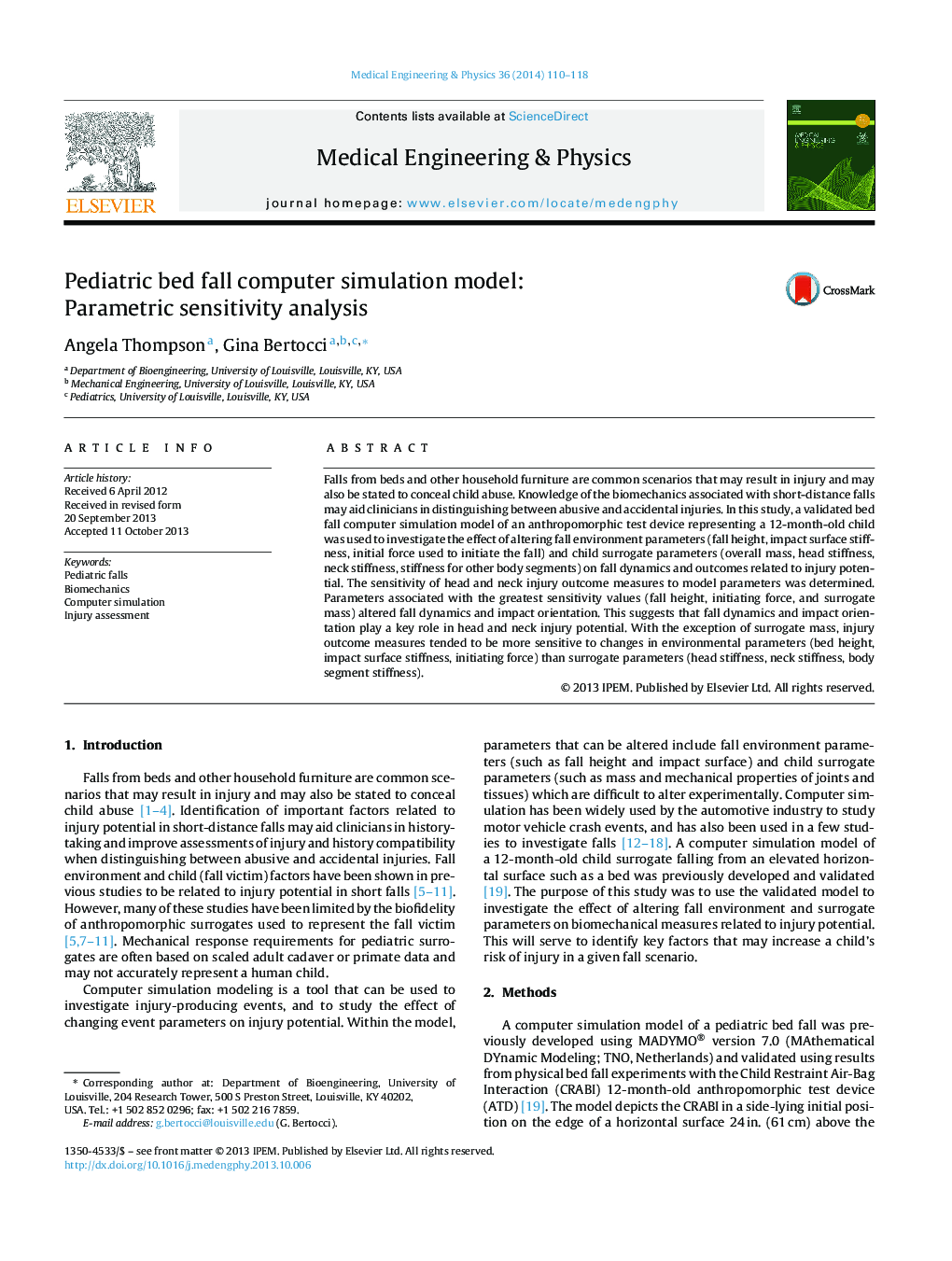| Article ID | Journal | Published Year | Pages | File Type |
|---|---|---|---|---|
| 876151 | Medical Engineering & Physics | 2014 | 9 Pages |
Falls from beds and other household furniture are common scenarios that may result in injury and may also be stated to conceal child abuse. Knowledge of the biomechanics associated with short-distance falls may aid clinicians in distinguishing between abusive and accidental injuries. In this study, a validated bed fall computer simulation model of an anthropomorphic test device representing a 12-month-old child was used to investigate the effect of altering fall environment parameters (fall height, impact surface stiffness, initial force used to initiate the fall) and child surrogate parameters (overall mass, head stiffness, neck stiffness, stiffness for other body segments) on fall dynamics and outcomes related to injury potential. The sensitivity of head and neck injury outcome measures to model parameters was determined. Parameters associated with the greatest sensitivity values (fall height, initiating force, and surrogate mass) altered fall dynamics and impact orientation. This suggests that fall dynamics and impact orientation play a key role in head and neck injury potential. With the exception of surrogate mass, injury outcome measures tended to be more sensitive to changes in environmental parameters (bed height, impact surface stiffness, initiating force) than surrogate parameters (head stiffness, neck stiffness, body segment stiffness).
